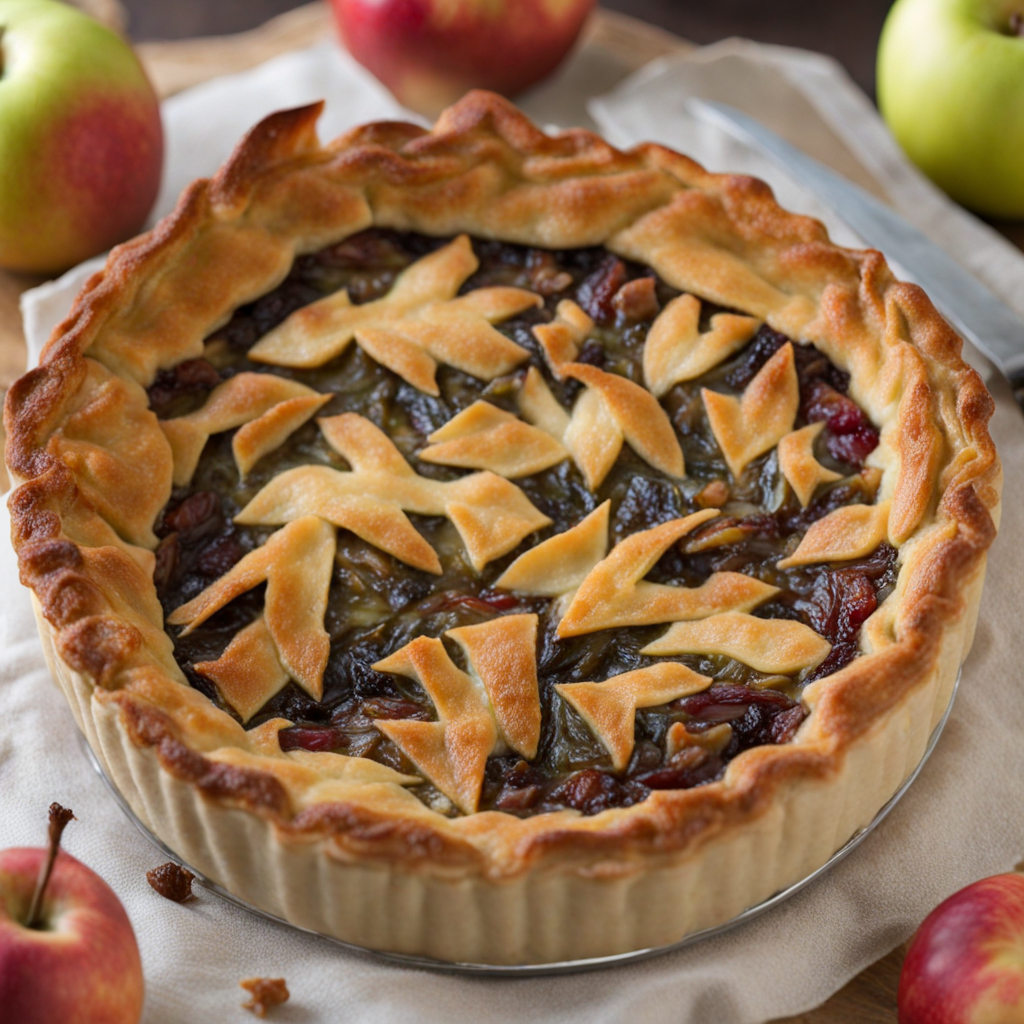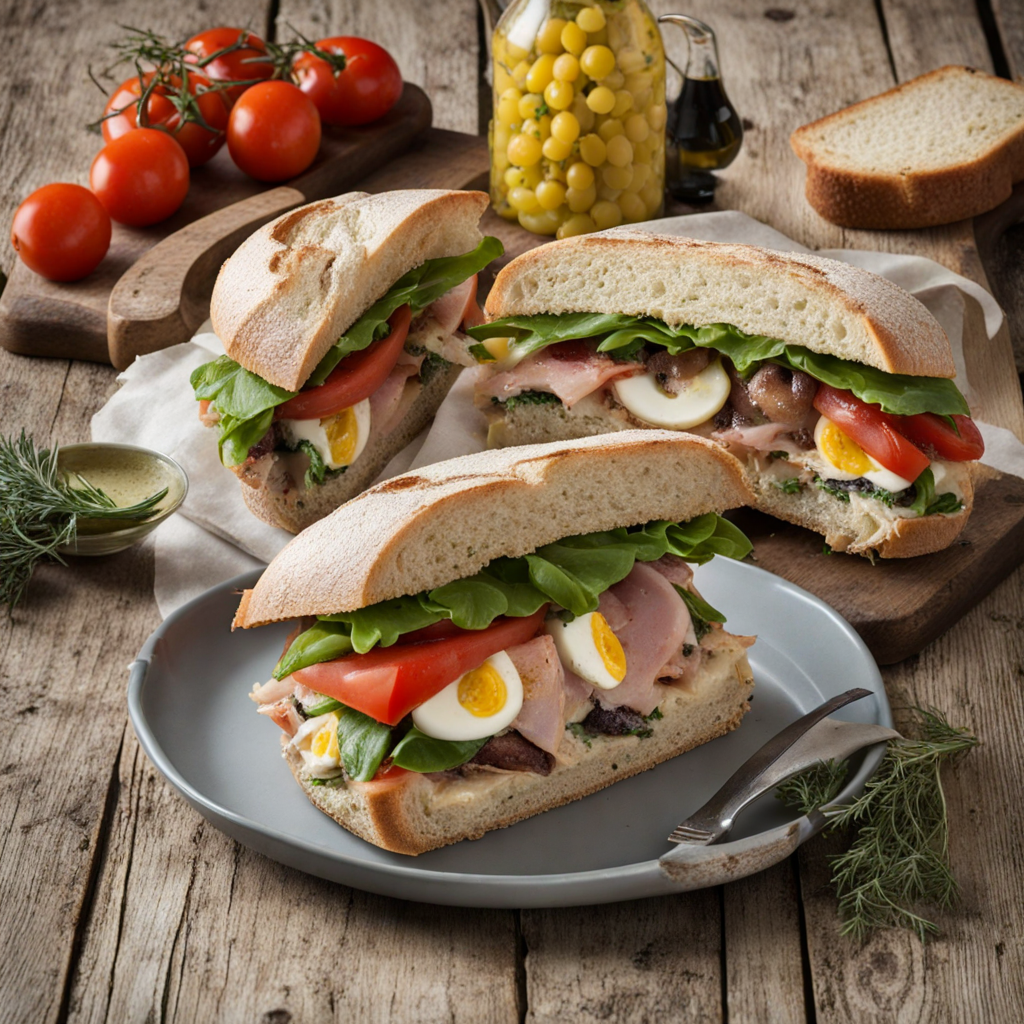Tourte de Blettes
Tourte de Blettes is a delightful pastry hailing from the picturesque region of Monaco, characterized by its unique combination of flavors that beautifully reflect the Mediterranean influence. This savory-sweet dish features a flaky, golden crust, which cradles a filling made primarily of Swiss chard, a leafy green that lends its gentle bitterness to the overall profile. The chard is often mixed with ingredients such as sugar, pine nuts, and raisins, creating a harmonious blend of tastes that dance on the palate. The contrast of the earthy greens with the sweetness of the fruits and the crunchiness of the nuts makes each bite an adventure. The preparation of Tourte de Blettes is an art in itself, as the pastry is traditionally made from scratch, ensuring that the crust is both light and crispy. The filling is cooked down to enhance the flavors, allowing the chard to absorb the sweetness from the sugar and the warmth from the spices, typically cinnamon or nutmeg. This dish often showcases a beautiful interplay of textures, from the tender greens to the chewy raisins and crunchy nuts, embodying a rich culinary heritage that is both satisfying and comforting. Served warm or at room temperature, Tourte de Blettes is perfect for any occasion, whether as a light lunch or a decadent dessert. The dish can be enjoyed on its own or paired with a dollop of fresh ricotta or a scoop of vanilla ice cream for a more indulgent experience. It’s a true testament to the innovative spirit of Monegasque cuisine, inviting food lovers to explore the lesser-known but equally enchanting flavors of this Mediterranean gem.
How It Became This Dish
The Story of Tourte de Blettes: A Culinary Heritage of Monaco #### Origins Nestled along the French Riviera, Monaco is a small but vibrant principality characterized by its opulent lifestyle, stunning coastline, and rich cultural history. Among its culinary treasures lies the Tourte de Blettes, a dish that tells the tale of the region's agricultural practices, historical influences, and culinary creativity. The origins of Tourte de Blettes can be traced back to the 16th century, when the cultivation of Swiss chard (blettes in French) became prevalent in the Mediterranean region. The climate of Monaco, with its mild winters and warm summers, was ideal for growing this leafy vegetable. Initially, it was a humble food for the working class, but over time, it grew into a beloved dish that crossed social boundaries. #### Ingredients and Preparation At its core, Tourte de Blettes is a savory-sweet pie made primarily of Swiss chard, which is often complemented by additional ingredients such as ricotta or other cheeses, sugar, raisins, and pine nuts. The crust, typically made from a simple pastry dough, encloses a filling that blends the earthiness of the chard with the sweetness of the added ingredients. This combination not only showcases the bounty of local agriculture but also reflects the Mediterranean tradition of balancing sweet and savory flavors. The preparation of Tourte de Blettes involves several steps: first, the chard is blanched and then chopped, while any additional ingredients are combined to create the filling. The dough is rolled out and lined in a pie dish, filled with the chard mixture, and then topped with another layer of dough or left open-faced. The pie is then baked until golden brown, resulting in a dish that is both visually appealing and tantalizingly aromatic. #### Cultural Significance Tourte de Blettes is more than just a dish; it is a symbol of Monégasque identity and a testament to the region's agricultural heritage. The pie reflects the resourcefulness of local cooks who took advantage of seasonal produce and transformed it into something special. Traditionally served in homes and at local celebrations, the dish is often associated with family gatherings and communal meals, reinforcing the bonds between friends and loved ones. In Monaco, food is a significant aspect of the cultural landscape, and Tourte de Blettes holds a special place in the hearts of its residents. Its presence at festivals and local markets serves as a reminder of the principality’s rich culinary traditions. The dish has become emblematic of the broader Mediterranean diet, celebrated for its use of fresh and locally sourced ingredients. #### Development Over Time As Monaco has evolved from a small fishing village to a glamorous center of luxury and tourism, so too has the Tourte de Blettes. Throughout the centuries, the dish has undergone various transformations, influenced by changing tastes and the integration of international culinary techniques. In the early 20th century, with the rise of tourism, chefs began to refine traditional Monégasque recipes like Tourte de Blettes to cater to a more cosmopolitan palate. Upscale restaurants and hotels began offering their own versions of the dish, often elevating it with gourmet ingredients or modern presentation techniques. This shift led to a renewed appreciation for the dish, allowing it to gain prominence beyond the borders of Monaco. The late 20th and early 21st centuries saw a resurgence of interest in traditional, regional recipes across Europe. In Monaco, chefs and home cooks alike began to embrace the roots of their culinary heritage, celebrating the flavors of local ingredients. The Tourte de Blettes experienced a renaissance as chefs sought to honor the past while incorporating contemporary influences. This has led to variations that include different types of cheeses, herbs, and even spices, reflecting the evolving nature of culinary traditions. #### Modern Interpretations Today, Tourte de Blettes can be found in various forms throughout Monaco and the surrounding regions. While traditional recipes remain popular, modern interpretations are increasingly common. Some chefs experiment with alternative crusts, such as whole grain or gluten-free options, while others play with the filling by adding seasonal vegetables or innovative flavor profiles. In recent years, vegetarianism and veganism have gained traction, prompting some restaurants to offer plant-based versions of the dish that replace dairy with plant-based alternatives. This adaptability speaks to the enduring nature of Tourte de Blettes, allowing it to remain relevant in an ever-changing culinary landscape. #### Conclusion Tourte de Blettes is more than just a pie; it is a culinary emblem of Monaco, representing the rich agricultural heritage and community spirit of the principality. Its journey from humble origins to a celebrated dish illustrates the importance of food in reflecting cultural identity and adapting to changing times. As Monaco continues to attract visitors from around the globe, the Tourte de Blettes will undoubtedly remain a beloved symbol of its culinary legacy, inviting all to partake in a slice of Monégasque history. Whether enjoyed at a local café, during a festive celebration, or in the comfort of home, Tourte de Blettes encapsulates the essence of Monaco: a blend of tradition, innovation, and a deep appreciation for the flavors of the Mediterranean. As this dish continues to evolve, it serves as a delicious reminder of the interconnectedness of culture, history, and food—a true testament to the heart and soul of Monégasque cuisine.
You may like
Discover local flavors from Monaco







